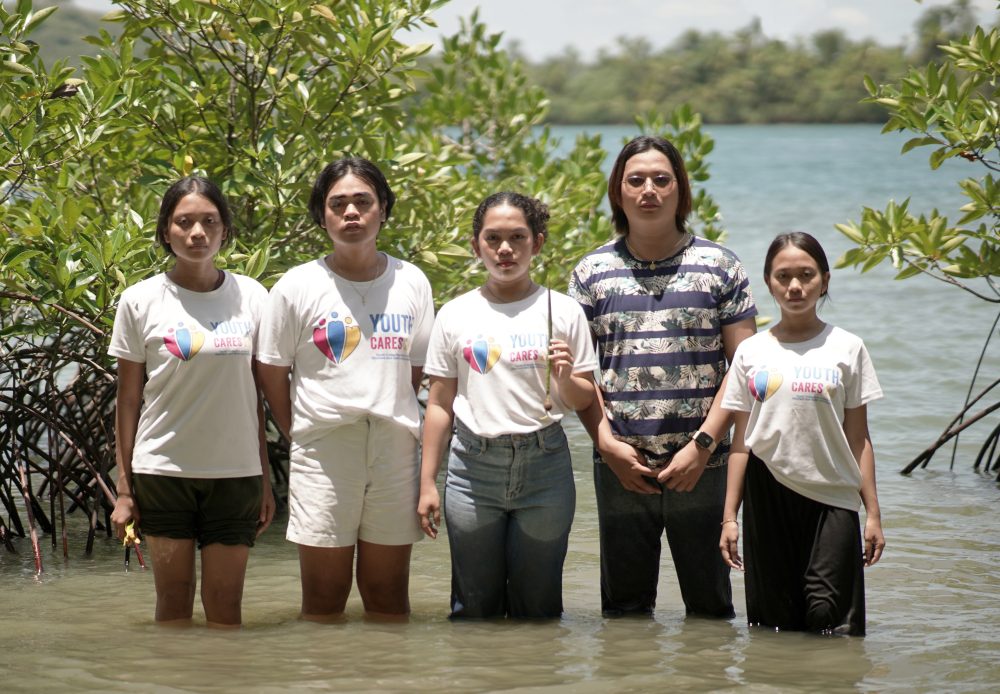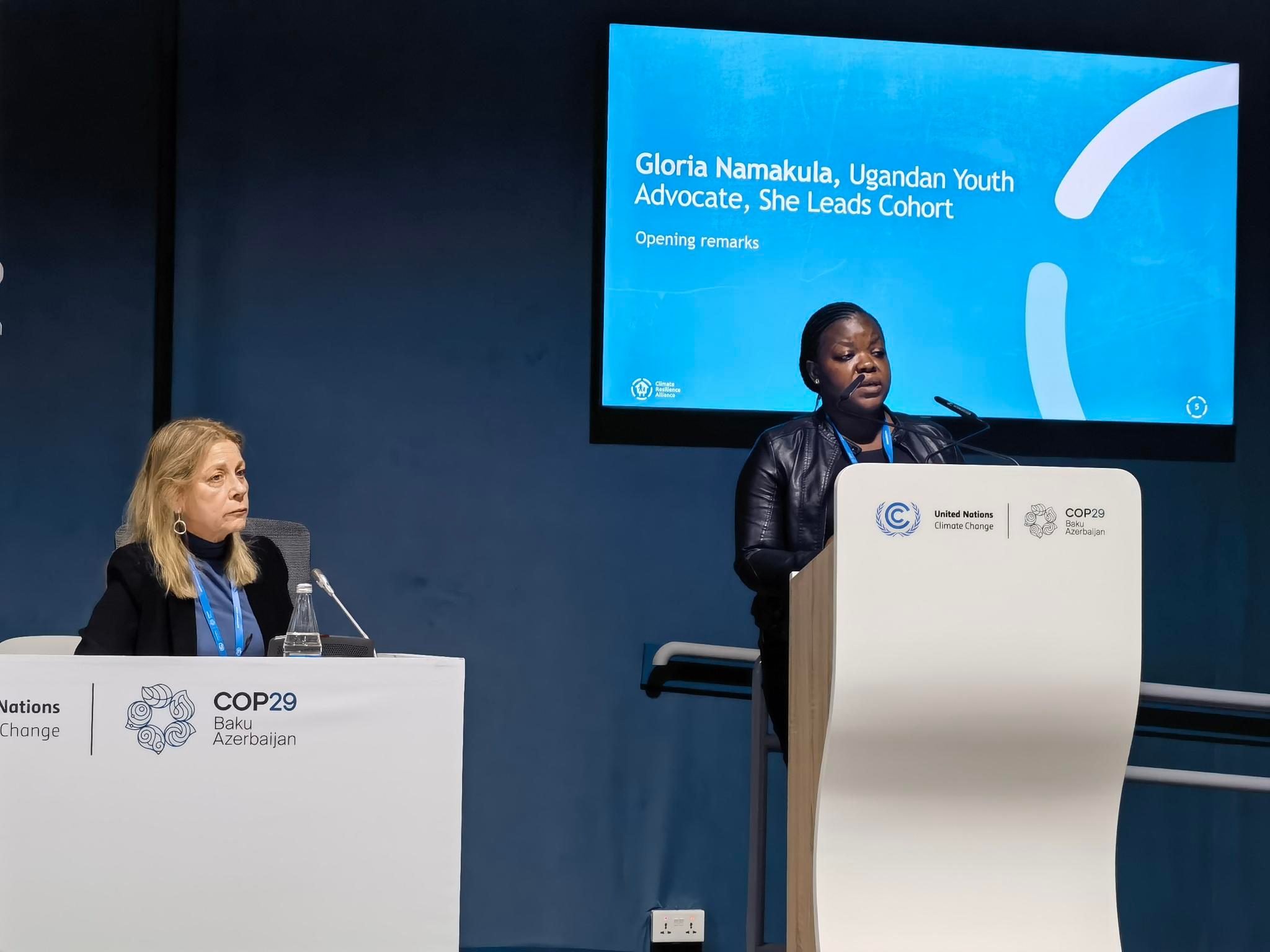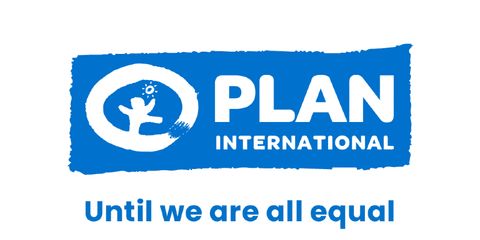COP29 ‘massive missed opportunity’ for climate goals despite youth advocacy
25 November 2024Commitments made at COP29 fell far short of what is required to meet urgent needs for climate action and represent a significant setback for progress on equity.

Young people plant mangrove seedlings in the Philippines to create a natural barrier against tidal surges. Photo credit: Plan International.
At COP29, Plan International joined together with children and young people, especially girls, alongside civil society, to advance an ambitious and equitable climate finance goal. While COP29 failed to meet the moment, the commitment and leadership demonstrated by young people remains a beacon of hope, showing that progress is still possible.
Under a deal reached at COP29, developing countries should receive at least $1.3tn a year by 2035 to adapt to the climate crisis. While this provides an important path forward, with only $300bn of this funding coming directly from the governments of wealthy countries, significant work remains to mobilise the funds necessary to make this goal a reality.
Our asks to policymakers at COP29 were guided by extensive consultation with children and youth, including research from the Pacific Islands. A delegation of youth from the Global South actively participated in side events, negotiations and other influencing opportunities.
Ambitious and equitable finance goals not met
As a member of the Zurich Climate Resilience Alliance, we called for an ambitious and equitable climate finance goal, including 5 tests to ensure climate finances work for all, to ensure that today’s generation of children, girls and youth who are the most impacted by the climate crisis have the support they need.
Despite COP29 being billed as the “climate finance COP,” it fell far short of what is required to meet urgent needs for climate action. The outcomes were a significant setback for progress on equity, with the New Collective Quantified Goal (NCQG) – intended to define the scale and ambition of future climate finance – lacking a concrete pathway to address the needs of those most affected by the climate crisis, including children, especially girls.
A minimum of $1.3tn is required in the developing world for mitigation, adaptation and Loss and Damage. Research by UNCTAD suggests private finance – which historically has never covered more than 19% of funding needs – will not be enough to bridge the gap.
Young advocates call for change
In the words of Kupakwashe, a 23-year-old youth delegate from Australia: “The outcome of the NCQG is devastating. Climate finance is not a luxury. It is a lifeline for communities facing the impact of the climate crisis. Girls face the worst of the climate crisis, and we cannot risk leaving them behind. We need climate finance to ensure intergenerational and gender justice. Unfortunately, this COP squandered hopes of achieving this.”
Describing the devastating impact the climate crisis is already having on her community, Gloria, a 24-year-old youth delegate from Uganda, says: “I was born, raised, and studied in a small, fragile village near Lake Victoria. Over the years, floods, erratic rainfall, storms, and droughts have made life difficult, especially for girls and young women.
“Young people on the ground at COP29 have kept the fight for climate and gender justice alive. It is us who continue to challenge the structures and systems to provide hope for a fair and just future,”
Tegan, a 24-year-old youth delegate from Australia.
“Climate change destroys our agriculture, our only major source of livelihood, leading to more poverty. Coupled with rigid cultural norms, this poverty due to climate change subjects us to social injustices like sexual harassment, gender-based violence, teenage pregnancies, and forced school dropouts due to increased caring duties.”
“This was a massively missed opportunity”, said Kathleen Sherwin, Plan International’s Chief Strategy & Engagement Officer. “The failure to define a truly ambitious goal undermines the potential for intergenerational justice that place girls and young women at the heart solutions.”
Progress made to include vulnerable communities
While the overall results of COP29 were disappointing, there are some important areas of progress.
While the NCQG negotiated text missed the mark on the quantity of finance needed, it urges that climate finance efforts promote inclusion and benefits of vulnerable communities, including women, girls, children and youth. This is a vital step in ensuring their voices are heard.
We call for all UNFCCC processes to include gender and age responsive climate action. We welcome COP29’s adoption of an enhanced 10-year Lima work programme which encourages mainstreaming gender and age disaggregated data and provides a roadmap to a renewed gender action plan by COP30.
Prioritising gender in all UNFCCC processes, with a specific focus on girls, will help to ensure that climate solutions are equitable and sustainable, benefiting current and future generations.
Young people create hope for future

Most importantly, we saw a wide range of young people who were unwavering in their advocacy throughout COP29, keeping the fight for climate justice alive. Their leadership shone through.
“Young people on the ground at COP29 have kept the fight for climate and gender justice alive. It is us who continue to challenge the structures and systems to provide hope for a fair and just future,” said Tegan, a 24-year-old youth delegate from Australia.
Sharon, a 14-year old youth delegate from Tanzania, adds: “I believe every child deserves a future where their dreams can thrive. That’s why leaders must commit to ensuring climate policies protect and empower children, giving us a voice to shape a world where we can truly belong”.
As we look ahead to COP30 in Brazil, children and young people will continue to be central in driving the agenda forward. “The passion, determination and commitment that young people, especially girls and young women, brought to COP29 is a sign of hope and optimism for the future even in the face of growing impacts of the climate crisis,” added Sherwin.
As the world prepares for COP30, there is a need to ensure that young people’s voices are at the forefront. We will continue to advocate for stronger commitments to gender justice, equitable climate finance, and intergenerational solutions to the climate crisis.
Categories: Emergencies, Youth empowerment
